Media | Articles
Jay Leno takes a 112-year-old EMF Model 30 for a spin
Innovations came fast and furious during the early years of the automobile, and racing played a vital role in many such advancements. Today, many of the cars that made names for themselves on the race tracks of yore are lost to the sands of time. Of the ones that remain, we have a soft spot for the ones that still get exercise. The latest episode of Jay Leno’s Garage looks at one such car, a 1911 EMF Model 30.
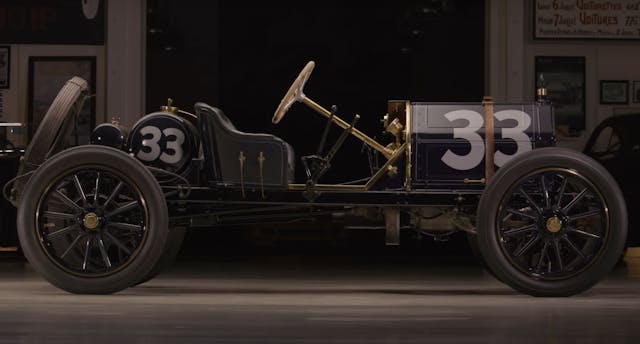
In 1908, EMF was founded by three Detroiters: coachbuilder Barney Everitt, ex-Ford product manager Walter Flander, and William Metzger, a former Cadillac employee and someone who some folks say was the first car dealer in America. The talented trio grabbed a letter from each last name, and voila, EMF was born. The company produced a handful of models during it’s short life, some under the EMF name and some which were eventually badged as Studebaker models.
Like many automakers of the era, EMF tried its hand at racing. This particular car was sent to the 1911 American Grand Prize race, the final running of an event that brought grand prix racing to Savannah, Georgia. As owner Dale Critz Jr. tells it, this car was the first of three consecutive Model 30s to be plucked straight from the assembly line and configured with speedster-type bodywork, seen here. The latter two cars (numbered 34 and 35, to follow this one’s numeration) received special Firestone tires before the race that enabled them to finish first and second; this car finishing in third place.

This EMF Model 30 features a stock flathead engine that, although Jay and Dale don’t specifically mention it, is likely 228 cubic-inches in displacement. The light car class that this car competed in was limited to 230 cubic-inch engines, thus tipping us off to which of EMF’s engines would be under the hood. Leno and Critz Jr. take some time to go over the rest of the systems in the car, which really paint a picture of just how brave the folks that raced these cars in period really were. There are no brakes on the front wheels, and only a hand-operated brake lever to slow the rear wheels.
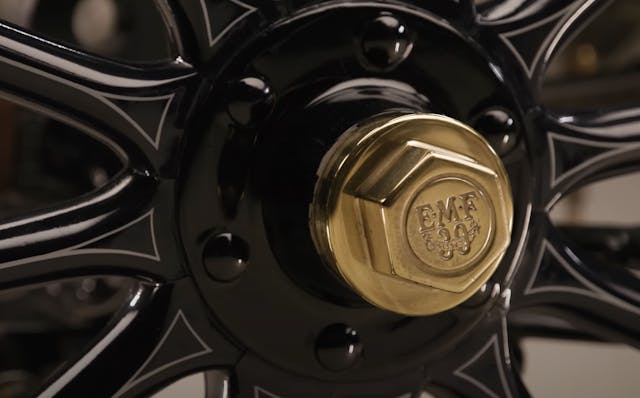
Race cars of this era often have two seats because you had to have a ride-along mechanic alongside to help manage the multitude of tricky function and things to keep track of while driving. From that second seat, a mechanic would operate the hand-pump fastened to the side of the bench to regulate fuel pressure. The pump has since been modified to run both the fuel and the oil pressure systems, which feed from the two tanks out back. The larger tank is for oil, because these were total-loss oiling systems.
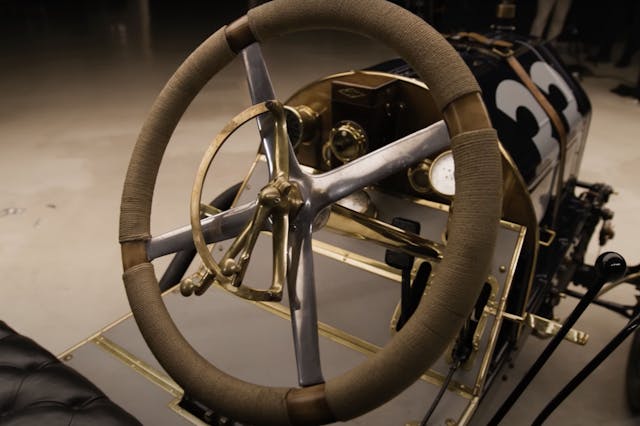
Despite the primitive braking systems, these cars weren’t slow by any means. This one boasts a speedometer that can read up to 60 mph, something Jay and Dale reminisce on while crawling over the car before the drive. “In the early days of the twentieth century, speed was the new sensation,” explains Leno. “There was no inherent fear of speed yet.” That probably explains the primitive brakes.
And this car proved that absence of fear, recording an average speed of 58 mph around the 17-mile course back in 1911, according to Critz Jr. seeing “something going a mile a minute was pretty impressive,” admits Leno.
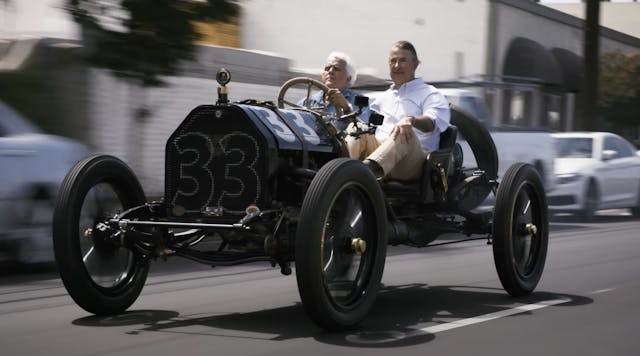
Though the car originally had two spark plugs per cylinder, Critz Jr. and his crew have modified it to run with one plug now, opting to use the second hole for a set of primer cups that help the car less cantankerous to start in foul weather conditions. With a little ether and a few cranks to prime it, the EMF Model 30 barks to life easily.
Out on the roads, the EMF’s engine produces plenty of low-end grunt for each of the three forward gears. The tachometer on the car reads up to just 1500 rpm, which seems low in modern context but was quite high for the time, according to Jay. The ride looks pretty decent too, thanks to leaf springs wrapped with twine that had been lubricated with oil. This one also has a Moto-Meter installed up front to measure the temperature of the coolant circulating the engine though Critz Jr. points out that the Moto-Meter wouldn’t have been run during the race, because that invention came out after 1911.
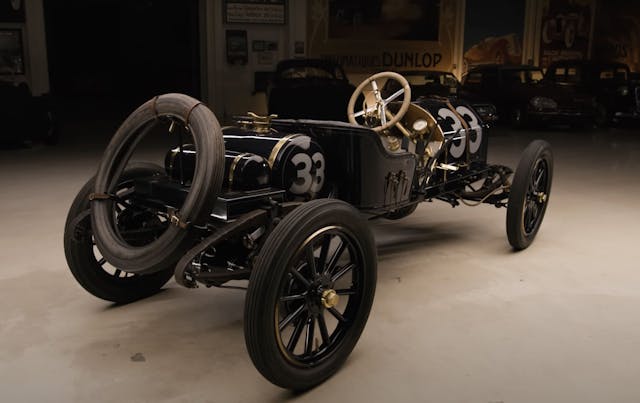
To see a car that’s more than a century old running and driving is always a treat, and Leno is clearly appreciative of the chance to experience such a thing. While we can’t promise you’ll get the chance to pilot a similarly-aged car, you can at least enjoy the full video of Jay’s time with the 1911 EMF Model 30.
***
Marketplace
Buy and sell classics with confidence
Check out the Hagerty Media homepage so you don’t miss a single story, or better yet, bookmark it. To get our best stories delivered right to your inbox, subscribe to our newsletters.
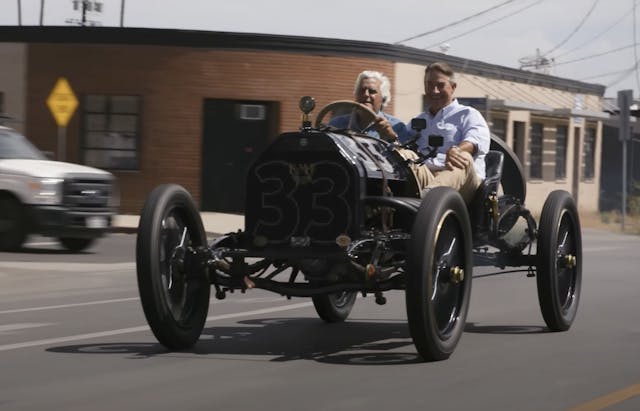












A very cool car. Fun to see how far we have come in 100+ years.